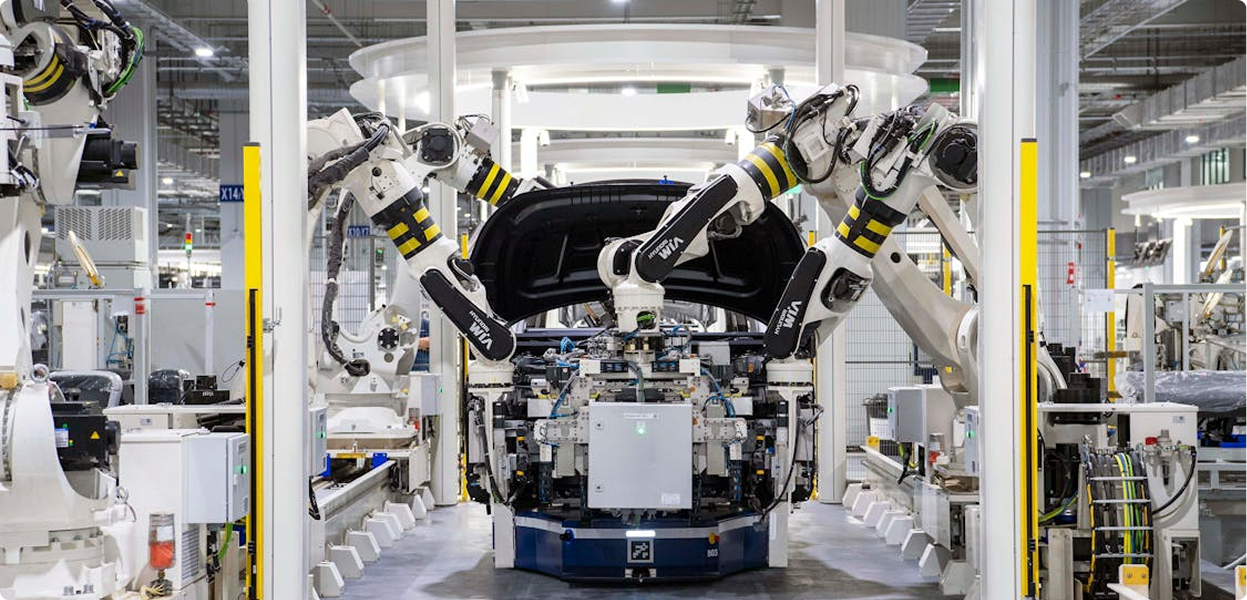In today’s competitive manufacturing landscape, the debate around manual vs. automated inspection is more relevant than ever. While many production lines have adopted inline inspection automation, manual quality control still plays a central role—though not without its limitations.
Manual inspection, or manual quality control, is used by dozens of industries, from medical device manufacturers to automobile component manufacturers, and relies on human inspectors to detect flaws in products, process, and discern between safe, random deviations or serious errors. While manual inspection plays an important role in auditing and final quality checks, relying on human inspection solely for defect detection can lead to inaccuracies and inefficiencies that compromise both safety and quality.
To bridge this gap, manufacturers must embrace AI-powered automated inspection tools to reduce human error, improve the speed and consistency of inspections, and enhance overall manufacturing efficiency.
Manual Inspection in Manufacturing: Limitations and Challenges
While manual inspection is an important part of the manufacturing process, human-led inspections are inherently prone to limitations that ultimately impact efficiency. To start, manual inspection carries a high error rate, with human inspectors failing to catch 15% of defects on average.
In a similar vein, human inspectors are more susceptible to making errors, due to factors like fatigue and subjectivity. Often, inspection accuracy declines alongside common pitfalls like long hours, short staffing, and mental fatigue.
Syed Abid A. Naqvi explains this phenomenon well in his research paper Critical Human Factor Issues in Quality Inspection Tasks. “Since the human being plays a vital role in an inspection task, and assuming that most workplaces are designed with the task in mind rather than the human, the capabilities and limitations of the human, if not incorporated into the design, could lead to the acceptance of poor items and rejection of good ones.”
In addition to the increased chance of human error, manual inspection processes also lack data training. Without a system to capture and continually update records, manufacturers relying on manual inspection miss out on process optimization and opportunities to reduce waste and inefficiency.
To meet current demands for efficient, error-free inspection processes and final products, manufacturers must embrace AI-driven solutions like Akridata to enhance manual oversight and better flag questionable product defects for further human review. Not only will these AI-powered solutions boost the efficiency of inline inspections, they will also reduce the number of tedious, manual tasks for manufacturers.
Automated Inspection in Manufacturing: Benefits of Inline AI-Powered Quality Control
Automated inline inspection offers several key benefits to modern manufacturers, including continuous real-time defect detection. With an automated system inspecting products on the line, defect detection, variations, and inconsistent quality can be easily pinpointed – without slowing down production.
AI-powered inline inspection models also offer manufacturers, especially medical device and automotive component manufacturers, higher accuracy and consistency. With AI-powered models, there’s a reduction in false positives and negatives, as these vision models can detect flaws with the highest accuracy. By flagging these imperfections on the line, AI models like Akridata enhance inspection accuracy, reduce misclassifications, and slash the need for backtracking on inspection tasks, thanks to human subjectivity or error.
One more key benefit of adopting an automated inline inspection model is scalability. As the need for medical devices and automotive components continues to rise, so does the need for manufacturers to increase their production scale.
At a smaller scale, yes, human inspectors can spot flaws in products. However, as the product scales up, or as manufacturing sites scale up in tandem, the need for an automated inline inspection becomes more and more necessary. The risk of missing defects, failing to meet industry regulations, or sending inconsistent products down the line is simply too high.
This is where automation becomes critical.
Inline automation helps manufacturers easily adjust to high production demands with accuracy and speed. Akridata integrates with your inline inspection for optimal defect detection, by combining video, image, and text analysis that allows for a comprehensive, speedy analysis of workflows and issues.
No matter the scale, Akridata works with your visual inspection data to provide continuous data processing and real-time updates that allow for accurate, fast inline inspection of products through visual data processing, while also shrinking downtime and operational costs.
For manufacturers seeking better quality inspection processes at scale, an automated solution is the way of the future.
Why Manual Inspection Alone is No Longer Enough
In today’s fast-paced, tightly competitive landscape, mManual inspection alone is no longer enough to satisfy modern marketplace demands. Medical devices and automotive components must meet strict safety and quality standards, as well as precise defect tracking regulations.
- Medical device manufacturing must adhere to FDA standards, including 21 CFR Parts 800-1299, 21 CFR Part 820, ISO 13485, IEC 60601, as well as standards for Quality System Regulation (QSR), Medical Device Reporting (MDR), and EU MDR (Medical Device Regulation).
- Automotive components face their own complex web of industry-specific standards, including IATF 16949, AEC-Q100 and AEC-Q200, which must be met during manufacturing and testing processes.
With so many regulations, the risk of non-compliance is simply too great for manufacturers to rely solely on manual inspection for quality control and defect tracking. Not to mention, there’s also the hidden costs that come along with defects slipping past manual inspectors, like product recalls, compliance fines, and reputational damage.
To keep up with strict safety and quality regulations, shifting to an AI-powered automation tool is a better, more accurate way to meet industry regulations. In particular, medical device and automotive component manufacturers can harness Akridata’s AI-powered inspection models to reduce errors, maximize quality control, and ensure compliance through the tool’s detailed inspection logs, to ensure audit readiness.
These inspection logs provide a full record of model versions, training data, exception handling, and overrides, to ensure quality and regulatory standards are always met, no matter the scale.
Enhancing Quality Control with AI-Powered Hybrid Inspection
While manual inspection remains necessary for auditing and final decision-making, AI-powered machine vision can reduce human workload by automating routine inspections and flagging uncertain cases.
Akridata’s AI-driven pass/fail insights optimize human oversight, reducing unnecessary interventions with clustering techniques for “passing” and “failing” visual datasets.
Through the use of data clustering techniques, Akridata categorizes visual data (i.e. your product on the line) into distinct “pass” and “fail” groups, based on safety, quality, and regulatory standards. From there, these groups are further segmented into detailed subgroups, so specific flaws can be analyzed, and processes ultimately reworked to avoid common errors in the future. Over time, this pass/fail function allows for the AI to easily flag defective products and overrides the need for a human to do so (or accidentally miss a defect).
With this pass/fail insight, Akridata improves the accuracy of inspection, reduces errors and defects in products, and speeds inline inspection times, while simultaneously reducing the chance of operator errors that may naturally occur during manual inspection.
The Future: Fully AI-Powered Quality Assurance
From defect detection to predictive quality control, AI models will soon predict defects before they happen. To remain competitive and deliver the best, safest products to market, manufacturers must evolve beyond manual inspections to improve their efficiency, cost savings, and quality consistency.
That’s where AI-powered solutions like Akridata come into action. Over time, as Akridata’s deep learning model ingests more and more visual data from an inspection line, the ease and accuracy of detecting defects and quality control issues continually ramps up, thanks to the growing wealth of image and data processing Akridata model can pull from.
This continued improvement in defect and lower quality detection ensures the inline inspection process is optimized over time, and allows for ongoing and improved accuracy and speed during the inline inspection process.
The Next Step in Manufacturing Excellence
Manufacturers who continue to rely on manual inspection alongside automated production lines are now at risk of inefficiencies, regulatory non-compliance, and waste. AI-driven automated inspection must not remain a supplement to inline inspection—it’s the next step in manufacturing excellence.
Akridata is leading the way in AI-powered quality control for defect-free production
Discover how leading manufacturers are reducing defects, increasing efficiency, and cutting costs with AI-powered inspection.
Get The True Cost of Manual Inspection in Manufacturing Whitepaper



No Responses